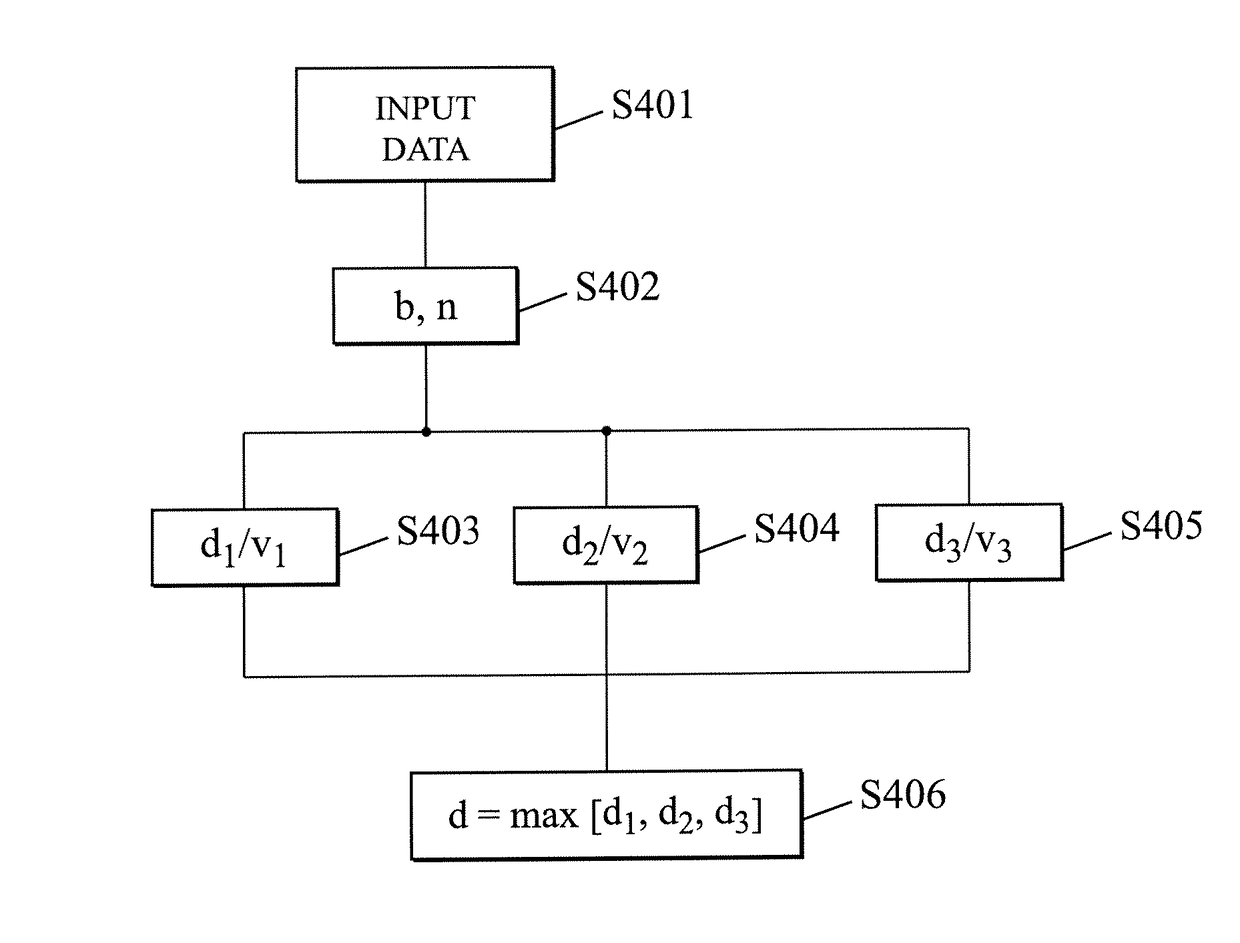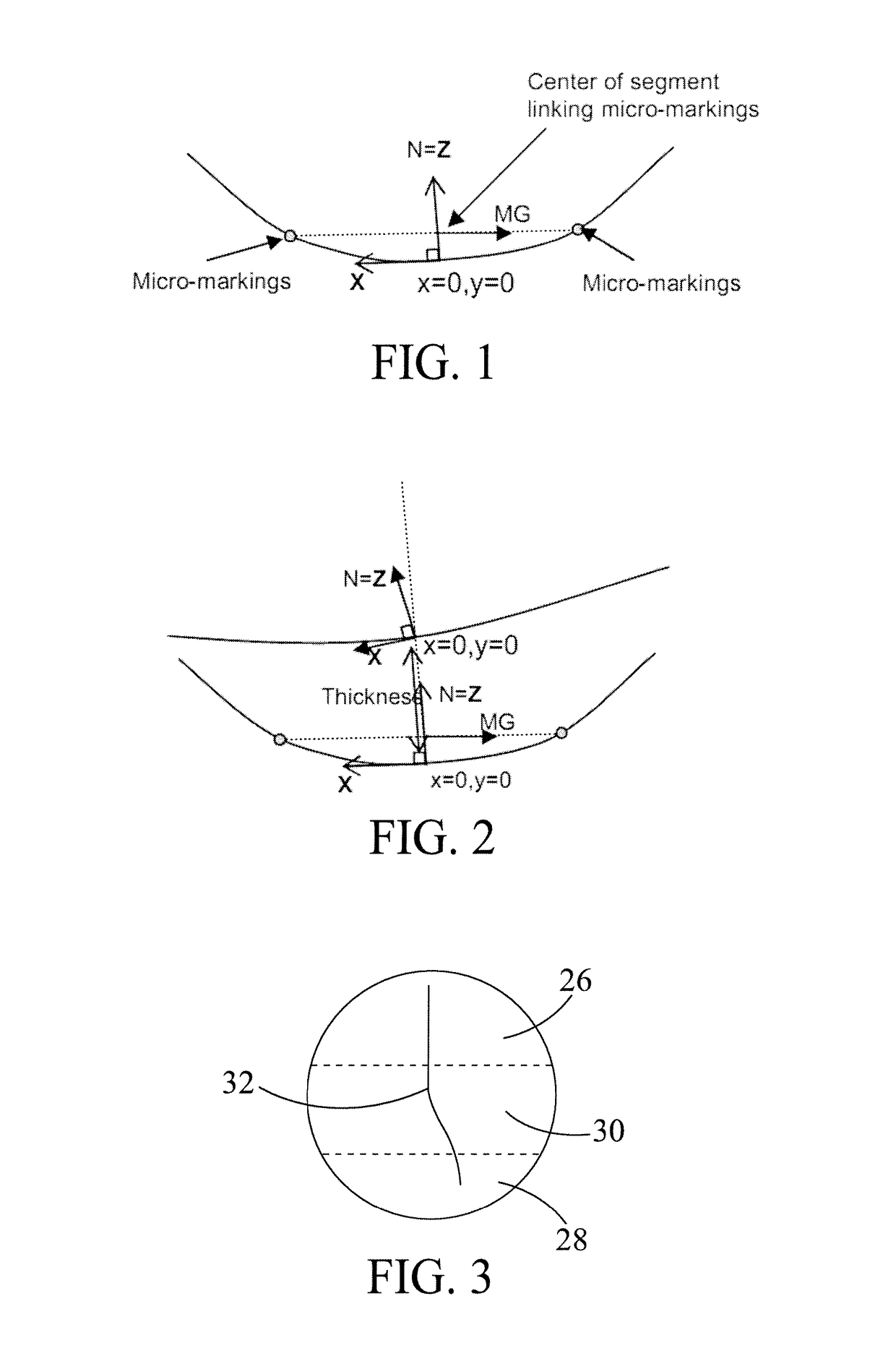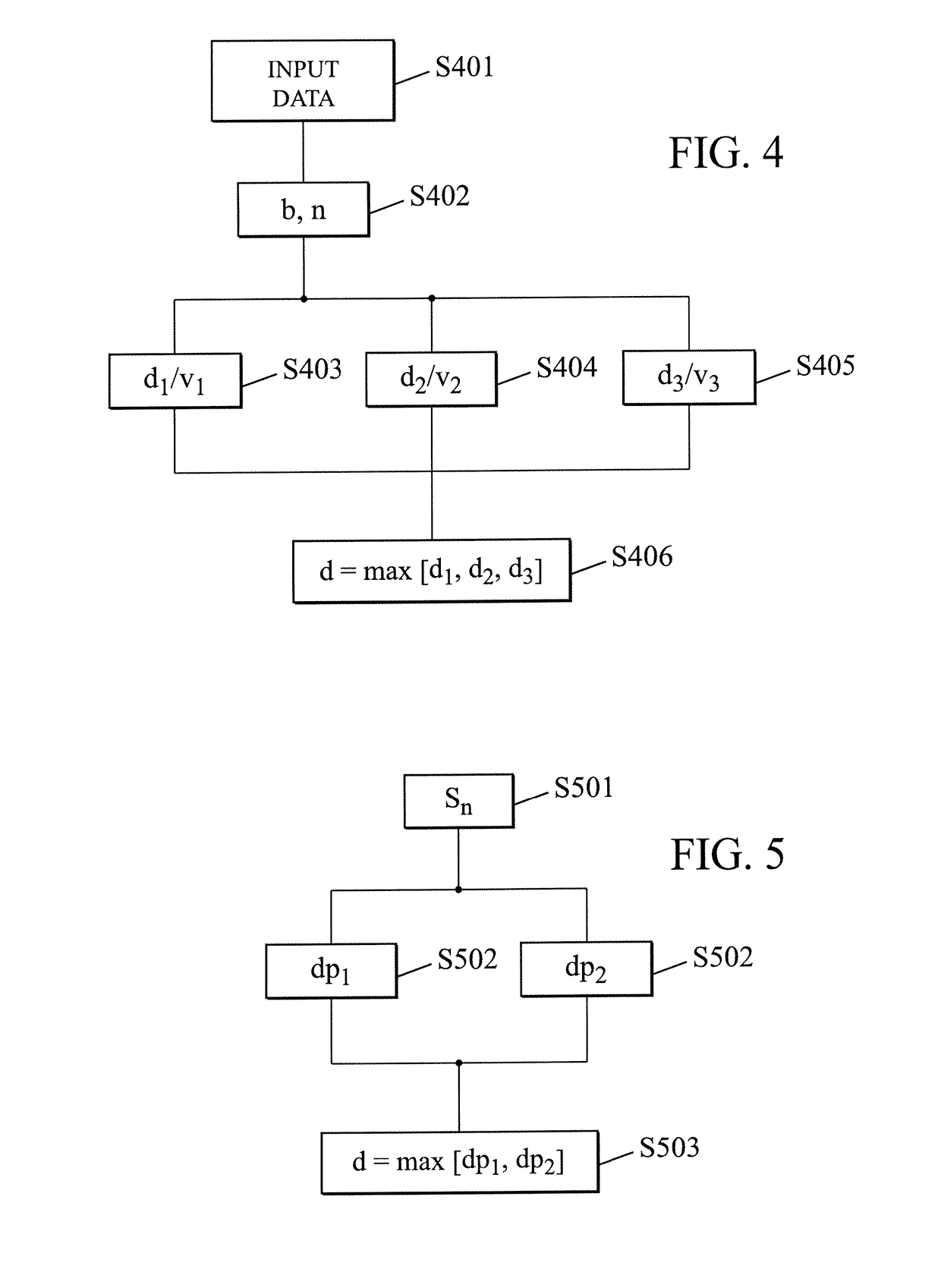Method for determining a progressive opthalmic lens and a set of semi finished lens blanks
a technology of opthalmic lenses and semi-finished lenses, which is applied in the field can solve the problems of different power correction values, and achieve the effects of improving lens performance, good sharpness, and convenient manufacturing of progressive ophthalmic lenses
- Summary
- Abstract
- Description
- Claims
- Application Information
AI Technical Summary
Benefits of technology
Problems solved by technology
Method used
Image
Examples
Embodiment Construction
[0046]A progressive lens comprises two non-rotationally symmetrical aspheric surfaces, for instance but not limited to, progressive surface, regressive surface, toric or atoric surfaces.
[0047]As is known, each point of an aspherical surface has an altitude z. For each point of the surface, a minimum curvature CURVmin is given by the formula:
[0048]CURVmin=1Rmax
where Rmax is the local maximum radius of curvature, expressed in meters and CURVmin is expressed in dioptres.
[0049]Similarly, a maximum curvature CURVmax can be defined at any point on an aspherical surface by the formula:
[0050]CURVmax=1Rmin
where Rmin is the local minimum radius of curvature, expressed in meters and CURVmax is expressed in dioptres.
[0051]It can be noticed that when the surface is locally spherical, the local minimum radius of curvature Rmin and the local maximum radius of curvature Rmax are the same and, accordingly, the minimum and maximum curvatures CURVmin and CURVmax are also identical.
[0052]From these exp...
PUM
 Login to View More
Login to View More Abstract
Description
Claims
Application Information
 Login to View More
Login to View More - R&D
- Intellectual Property
- Life Sciences
- Materials
- Tech Scout
- Unparalleled Data Quality
- Higher Quality Content
- 60% Fewer Hallucinations
Browse by: Latest US Patents, China's latest patents, Technical Efficacy Thesaurus, Application Domain, Technology Topic, Popular Technical Reports.
© 2025 PatSnap. All rights reserved.Legal|Privacy policy|Modern Slavery Act Transparency Statement|Sitemap|About US| Contact US: help@patsnap.com



